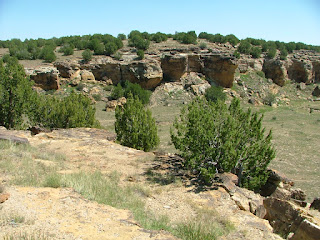 |
| William Henry Perkin |
All of the major elements had been discovered by the time he started experimenting in his lodgings in Cable Street during the Easter holidays as a mere 18 year old. He was working on a hypothesis of his teacher and mentor, August Wilhelm von Hofmann, on how to synthesise quinine, which was a natural product which was used to treat malaria at that time. William Henry Perkin was a prodigy in the new sphere of chemistry when he was inducted into the Royal College of Chemistry at the tender age of only 15. He was born in the East End of London to an English Carpenter father and a Scottish Mother.It was an accidental discovery, that aniline could be partly transformed into a crude mixture which produced a substance with an intense purple colour when when extracted with alcohol.
Perkin also had an interest in painting and photography, carried out further trials with his friend Arthur Church and his brother Thomas. Since these experiments were not part of the work on quinine which had been assigned to Perkins, the trio carried them out in a hut in Perkin's garden to keep them secret from Hofmann.
At the time, all dyes used for colouring cloth were natural substances, many of which were expensive and labour-intensive to extract—and many lacked stability, or fastness. The colour purple, which had been a mark of aristocracy and prestige since ancient times, was especially expensive and difficult to produce, as the dye used, known as Tyrian purple, was made from the glandular mucus of certain molluscs. Its extraction was variable and complicated, and so Perkin and his brother realised that they had discovered a possible substitute whose production could be commercially successful.
Their initial experiments indicated that it dyed silk in a way which was stable when washed or exposed to light. They sent some samples to a dye works in Perth, Scotland, and received a very promising reply from the general manager of the company, Robert Pullar. Perkin filed for a patent in August 1856, when he was still only 18. They called the substance 'mauveine'. the French word for mallow which bore flowers of a similar colour.
Mauvine
His timing could not have been better. England's Industrial Revolution was in full swing and coal tar, a substance vital to his production, was a by-product of making coal gas and coke.
Having invented the dye, Perkin was still faced with the problems of raising the capital for producing it, manufacturing it cheaply, adapting it for use in dyeing cotton, gaining acceptance for it among commercial dyers, and creating public demand for it. He was active in all of these areas: he persuaded his father to put up the capital, and his brothers to partner with him to build a factory; he invented a mordant for cotton; he gave technical advice to the dyeing industry; and he publicised his invention of the dye. Public demand was increased when a similar colour was adopted by Queen Victoria in Britain and by Empress Eugénie, wife of Napoleon III, in France, and when the crinoline or hooped-skirt, whose manufacture used a large quantity of cloth, became fashionable. Everything fell into place: with hard work and lucky timing, Perkin became rich. After the discovery of mauveine, many new aniline dyes appeared (some discovered by Perkin himself), and factories producing them were constructed across Europe.
Perkin's Green
William Perkin continued active research in organic chemistry for the rest of his life: he discovered and marketed other synthetic dyes, including Britannia Violet and Perkin's Green; he discovered ways to make coumarin, one of the first synthetic perfume, raw materials, and cinnamic acid. (The reaction used to make the last became known as the Perkin reaction.) Local lore has it that the colour of the nearby Grand Union Canal changed from week to week depending on the activity at Perkin's Greenford dyeworks. In 1869, Perkin found a method for the commercial production from anthracene of the brilliant red dye alizarin, which had been isolated and identified from madder root some forty years earlier in 1826 by the French chemist Pierre Robiquet, simultaneously with purpurin, another red dye of lesser industrial interest, but the German chemical company BASF patented the same process one day before he did.[5] During the next decade, the new German Empire was rapidly eclipsing Britain as the centre of Europe's chemical industry. By the 1890s, Germany had a near-monopoly on the business and Perkin was compelled to sell off his holdings and retire. He always remained a trailblazer in the world of dyes, even if he did enter it by accident.

Like most of the industries in the Victorian era, the dye industry was hazardous. Workers were prone to bladder cancer, more specifically Transitional cell carcinoma. Ironically it was the chemistry learned from experiments like Perkins' which helped to treat that condition as well as many other advances in medicine.
In the late 19th century, aniline emerged as an analgesic drug, its cardiac-suppressive side effects countered with caffeine. During the first decade of the 20th century, while trying to modify synthetic dyes to treat African sleeping sickness, Paul Ehrlich – who had coined the term chemotherapy for his magic bullet approach to medicine – failed and switched to modifying Béchamp's atoxyl, the first organic arsenical drug, and serendipitously obtained a treatment for syphilis – salvarsan – the first successful chemotherapy agent. Salvarsan's targeted microorganism, not yet recognised as a bacterium, was still thought to be a parasite, and medical bacteriologists, believing that bacteria were not susceptible to the chemotherapeutic approach, overlooked Alexander Fleming's report in 1928 on the effects of penicillin.
In 1932, Bayer sought medical applications of its dyes. Gerhard Domagk identified as an antibacterial a red azo dye, introduced in 1935 as the first antibacterial drug, prontosil, soon found at Pasteur Institute to be a prodrug degraded in vivo into sulfanilamide – a colourless intermediate for many, highly colourfast azo dyes – already with an expired patent, synthesized in 1908 in Vienna by the researcher Paul Gelmo for his doctoral research.[24] By the 1940s, over 500 related sulfa drugs were produced. Medications in high demand during World War II (1939–45), these first miracle drugs, chemotherapy of wide effectiveness, propelled the American pharmaceutics industry. In 1939, at Oxford University, seeking an alternative to sulfa drugs, Howard Florey developed Fleming's penicillin into the first systemic antibiotic drug, penicillin G. (Gramicidin, developed by René Dubos at Rockefeller Institute in 1939, was the first antibiotic, yet its toxicity restricted it to topical use.) After World War II, Cornelius P. Rhoads introduced the chemotherapeutic approach to cancer treatment.
In the 1940s and early 1950s, aniline was used with nitric acid or dinitrogen tetroxide as rocket fuel for small missiles and the Aerobee rocket. The two fuel components are hypergolic, producing a violent reaction on contact. Aniline was later replaced by hydrazine.
Prussian Blue

Perkins' dyes are not the only ones which have contributed to the world of medicine. Prussian blue, produced by oxidation of ferrous ferrocyanide salts, was first synthesised by paint maker Diesbach in Berlin around 1706. Because it is easily made, cheap, nontoxic, and intensely coloured, Prussian blue has attracted many applications. It was adopted as a pigment very soon after its invention and was almost immediately widely used in oil, watercolour, and dyeing. Engineer's blue and the pigment formed on cyanotypes were not prone to fading, leading engineers and architects to take it up as a good ink for their plans and drawings, leading to their common name of 'blueprints'. Herschel developed a commercially successful photocopying process in use from 1843 until the early 1940s using this ink too. Certain crayons were once coloured with Prussian blue (later relabelled midnight blue). It is also a popular pigment in paints. Similarly, Prussian blue is the basis for laundry bluing.
Prussian blue also has its medical uses. It is used in pathology tests for bone marrow. It can also be administered orally to people who have become internally contaminated with thallium or radioactive caesium. It acts by trapping the thallium or caesium in the gut, thereby increasing its faecal secretion. It was used with varying levels of success in treating victims of radioactive contamination and is still licensed for use in the USA and Germany today.
 |
| Vincent van Gogh's Starry Night uses Prussian and Cerulean blue pigments |
Excerpt
“She hasn’t got the combination to the safe,” said the manager. “You can scare her as much as you want. We all know you’re not gonna use that gun on us.”
Rebecca’s breath halted as she felt a careless arm drape around her shoulder.
“I don’t need a gun to hurt someone. Give us the combination.” The manager remained mute and turned his face away. “Your call, sir.” He pulled Rebecca around to face him as she gasped in alarm. “Just remember who you’ve got to thank for this, ma’am.”
He pointed over at the manager, who refused to meet her eyes. “That man right there.”
“Anything that happens to her is down to you. Not me,” said the manager.
Rebecca felt herself dragged from the room by one arm. She was pulled into the office next door and pushed against the wall. The man walked over and pulled down the blind before returning to her. Her breath came in ragged pants of fear. “Please, no. Don’t.”
He leaned on the wall, a hand on either side of her head, and pressed his face close. “You were gonna hold this place up. Are you some kind of idiot?”
She blinked in confusion. “Huh?”
The man pulled down his mask, revealing the face of the fair man who had walked into her office looking for Fernsby. “Don’t lie to me, honey. You had the same idea as we did— look at Meagher’s bank account to see where he gets his money. We’ve watched you march up and down outside this place all day, like you were on sentry duty, while you built up your courage. You even got in the way of us doin’ it. What the hell is goin’ on in your head? How dumb can a woman get?”
“You? Here?” She couldn’t quite decide whether to stop being scared or not.
“Yeah. Me.” He indicated with his head. “Now, Nat’s in there, and he needs the combination of the safe. It’s too new and sophisticated for him to crack the combination. You and me need to put on a bit of a show to make sure the manager gives it up.”
“You’re not robbing the bank?”
Jake huffed in irritation. “Try to keep up, Becky. I need you to scream for help so the manager gives Nat the combination to the vault. We want Meagher’s records too.”
She shook her head. “Me? I can’t scream.”
“What do you mean you can’t scream? All women can scream.”
“I can’t. I’m just not made that way.”
He frowned. “Look, Becky. If you won’t scream, I’m gonna have to make you. Let’s do this the easy way, huh?”
“Please, help! Noooo.”
Jake frowned. “You call that screamin’? That’s useless.”
“I told you. I can’t.”
Jake flicked up an eyebrow. “Last chance, Becky.”
“Aaargh—”
“Nope.” A gloved hand reached up to her hat as his eyes glittered with mischief. “Don’t say you weren’t warned, sweetheart.”















